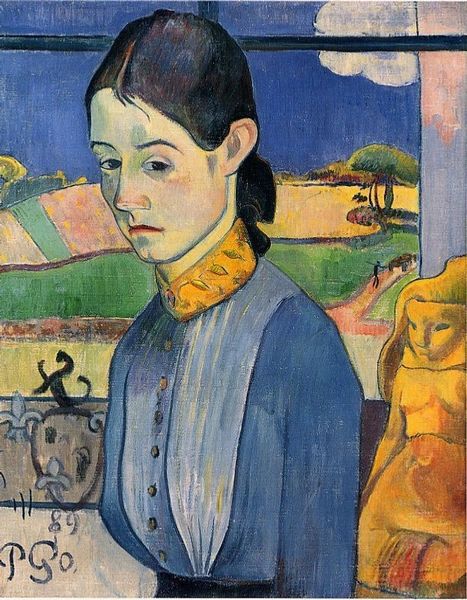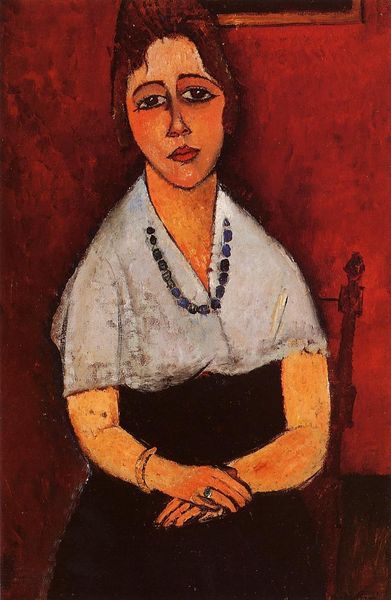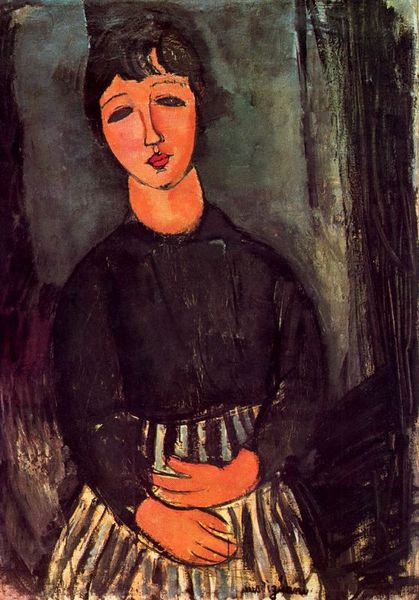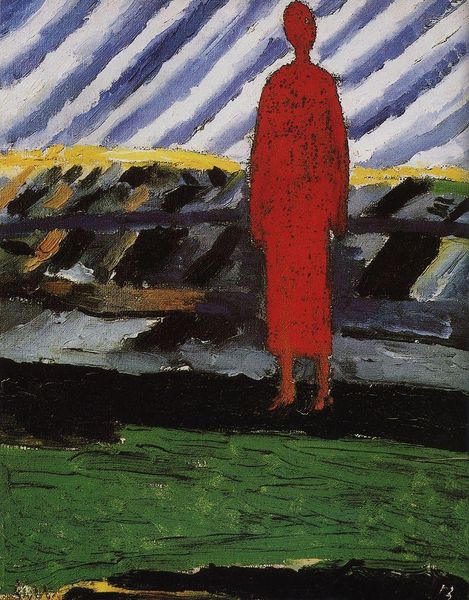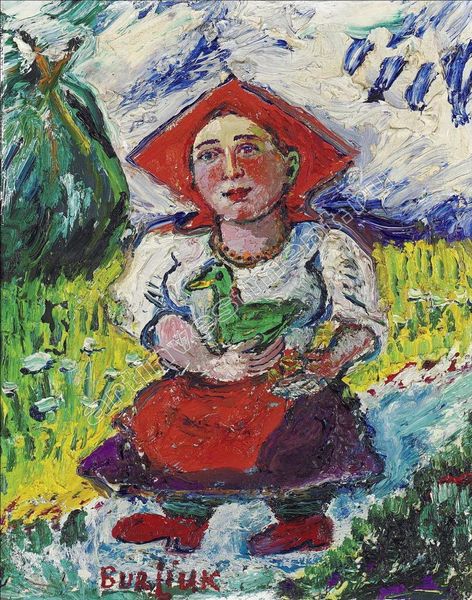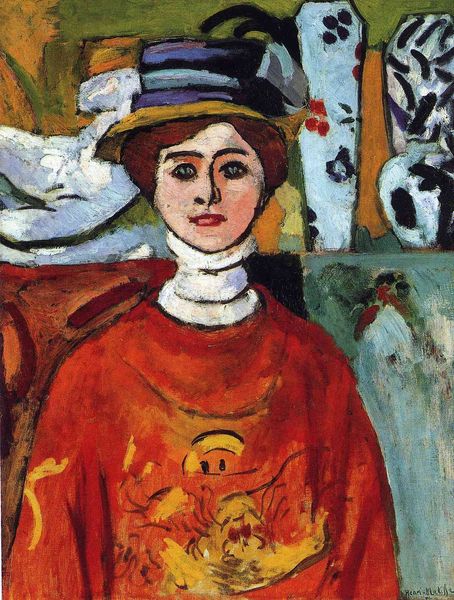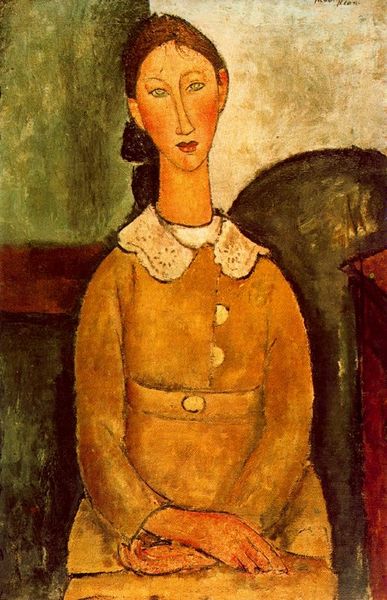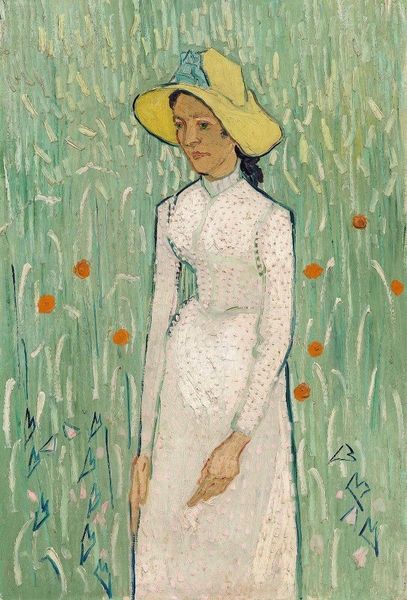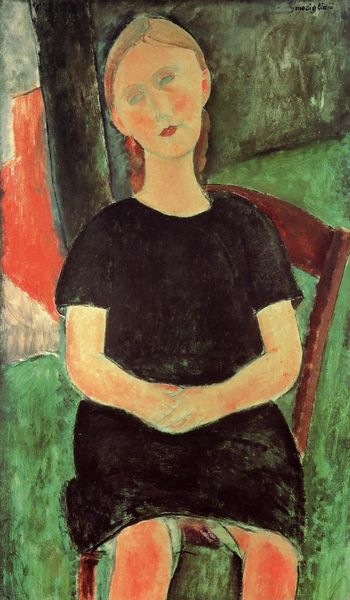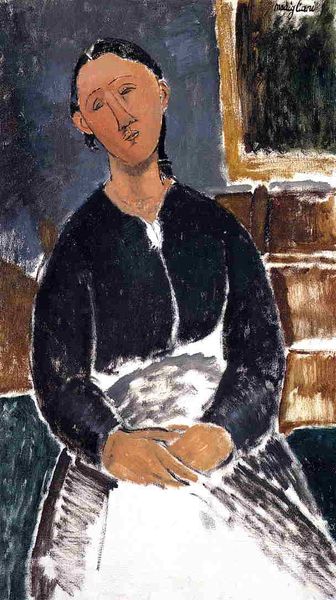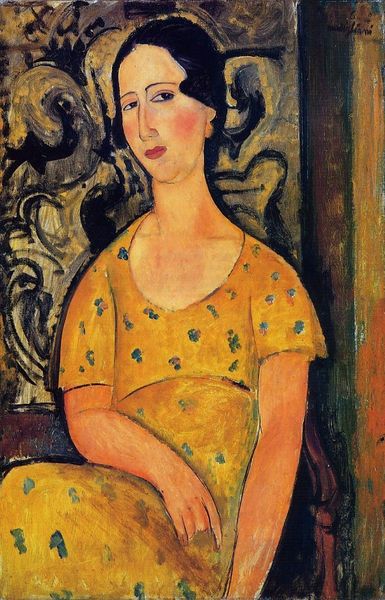
painting, oil-paint
portrait
painting
oil-paint
landscape
soviet-nonconformist-art
figuration
handmade artwork painting
oil painting
modernism
suprematism
Dimensions: 72 x 54 cm
Copyright: Public domain
Editor: Here we have Kazimir Malevich's "Carpenter," an oil painting from 1927. The figure is so striking; the stark contrast between the vibrant colors and the almost severe geometric forms gives it a powerful, unsettling quality. How do you interpret this work? Curator: Note the painting's deliberate flatness. The figure and the background merge, challenging traditional perspective. Observe the bold use of color – the red face, for instance – functioning less as representation and more as a formal element within the composition. What effect does this lack of depth and unconventional color palette achieve? Editor: I guess it pushes the image away from realism. The subject becomes more of an arrangement of shapes and colors than a portrait of an actual carpenter. Curator: Precisely. Malevich, moving away from Suprematism, engages here with a simplified form of figuration. However, his interest remains in the interplay of forms and colors. Consider the placement of the figure within the landscape; the verticality of the figure is echoed by the vertical lines of the fence, creating a visual rhythm. Editor: So it's less about what the carpenter *is* doing and more about how Malevich is using shapes and colors to structure the painting. Curator: Exactly. The painting becomes a study in pictorial organization. Even the tools in the carpenter's hands contribute to this overall structure. Do you notice how the shapes relate to one another? Editor: Now I see it, the geometric organization really structures the piece. I initially focused on the figure and missed the careful placement of everything around him. Curator: Analyzing Malevich through a formalist lens really brings out the emphasis on the intrinsic visual language of the work. Editor: I completely agree. I will look at other paintings through a formalist lens to broaden my perspective and analytical skills.
Comments
No comments
Be the first to comment and join the conversation on the ultimate creative platform.

